► New 2022 Range Rover revealed
► Full EV by 2024, long-range PHEVs now
► On UK sale May 2022, priced from £94k
The new Mark 5 Range Rover was only revealed last week, but it’s already got its first, third-party modification. Glohh, a British company already known for making Range Rover parts has revealed the GF-1; an enhanced taillight, offering OLED tech.
The GF-1 takes the place of the standard unit, but brings in an Audi-style Mood Matrix System – and a blank canvas when it comes to a light signature. Upon release, three light signatures will be available. Glohh says the brightness of each individual segment will also be controlled, in order to reduce the dangers of glare.
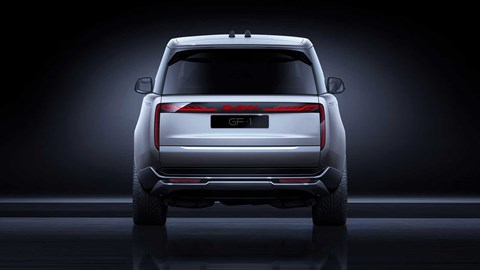
‘As a long-time admirer of Range Rover, I have a great amount of respect for the new design philosophy. Light has always been a medium of external communication and interaction; our mission is to bring this to life on a vehicle praised for its distinct identity,’ said Dr Faheem Rafiq, lead designer at Glohh. ‘Identity needs to be presented through modern lighting systems, and in this case, there was an opportunity to enhance the existing minimalist design with a more alive and eye-catching expression, in true Glohh fashion.’
Glohh is waiting to see just how popular the new Range Rover will be before committing to production, but owners of the Mk4 will be able to similar unit for their car next year.
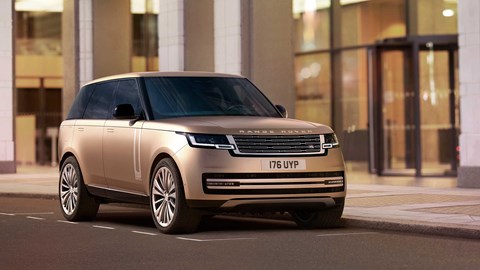
Range Rover Mk5: everything you need to know
The new 2022 Range Rover is here and it’s playing catch-up with its eco credentials. Land Rover has revealed that its new range-topper is going electric – with a full battery-powered 4×4 waiting in the wings and a flurry of long-range plug-in hybrid versions that’ll let owners do most journeys on silent electric power from launch in spring 2022.
It’s part of a move to reposition the Range Rover and make it more sustainable. This model has become hugely successful over 51 years with a unique reputation for luxury motoring in town and country, from the rural Shires to Shaftesbury Avenue in London. In many ways it defines the sector; the Germans may nip at the Rangie’s heels from below and British luxury brands Bentley and Rolls-Royce are nibbling into Range Rover territory from above, but nobody has successfully displaced the British icon yet.
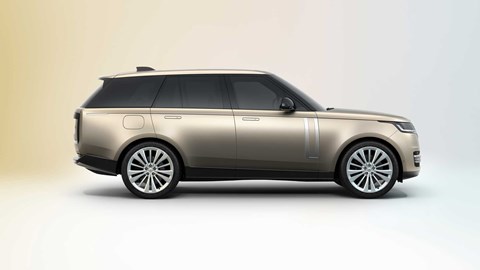
But the world moves on. Today’s L405 generation is nearly a decade old and it’s ripe for replacement. Read on for our full briefing on the new Range Rover to find out what makes it tick.
A more sustainable Range Rover
The new model, codenamed L461 internally, is an important launch for Land Rover. Even in its tenth year on sale, the outgoing car sold 41,000 units worldwide last year – and when you consider that the average transaction price is £105,000 in the UK, you realise just how reliant Gaydon is on the revenues this one model line rakes in: an estimated £4.3 billion in turnover by that crude calculation in just one year.
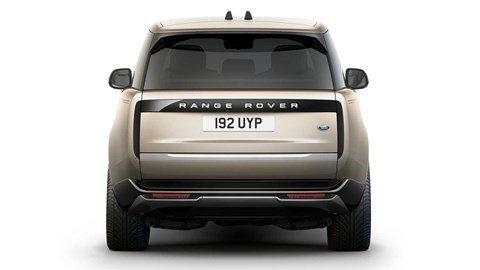
The genre is at a crossroads. Hasn’t the SUV craze reached saturation point? When everyone is reaching for the skies with ever taller 4x4s, how do you protect your vantage point? Especially when environmental pressures have reached a critical mass. In these challenged, ascetic times ostentation is as popular as burning fifty quid notes to keep warm amid the fuel shortages this winter of discontent. The world has moved on and sustainability is fast moving from the letters page of The Guardian to the lips of everyday folk, who really do care about climate change, where their coffee cups end up and from which farm their beef brisket hails.
In short, Range Rover 5 needs to change, fast. Peek under the same-again suit and you’ll find the most extensive rewiring ever to be applied to the family. Previous replacements have been re-engineered to optimise the current trajectory: to be more luxurious, better off-road and slicker on. Those lofty aims continue, but they’re joined by a more responsible character. This is a Range Rover that must be classier, yet cleaner, brilliant but less bling. It’s a Range Rover with a conscience.
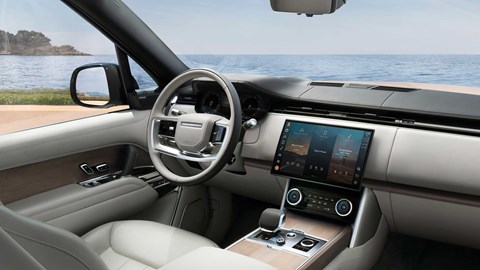
‘There are changing expectations in the luxury landscape,’ Amy Frascella, Land Rover’s design director in charge of materials and colours, told CAR. ‘The pandemic in the past 18 months has really accelerated the pace of change; it’s made people reassess their relationship with the planet and we’ve had to respond.’
So the new Rangie is designed to look less intimidating, more intelligent and more environmentally responsible. Hence the choice of alternative materials to the animal hide and wood that’ve adorned luxury interiors for the past century: Frascella lists the sustainable Kvadrat woollen seat fabric option, the open-pore wood and a ceramic finish available on the door cards. ‘We’ll do leather if you want it, but it has fewer coatings than most automotive applications. It’s more like upmarket furniture.’
It’s a more restrained, less overt, more self-aware kind of luxury – one that echoes Rolls-Royce’s talk of post-opulence. It’s a Range Rover for our times.
How the new 2022 Range Rover will go electric
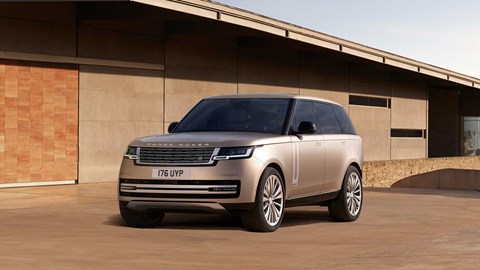
Making all this possible is Land Rover’s new Modular Longitudinal Architecture (MLA), a platform flexible enough to house pure electric, hybrid or combustion engine drivetrains. The headline-rousing Range Rover battery electric vehicle (BEV) isn’t due until 2024, but every other combination will be available from launch this coming spring:
- P400 petrol The entry-level Range Rover uses the familiar 3.0-litre Ingenium straight six, tickled up with mild hybrid skills for a 395bhp/406lb ft slug of thrust. Base model averages 29.7mpg and 215g/km CO2.
- P530 petrol The V8 option remains for those who believe there’s no replacement for displacement. It’s the BMW-sourced 4.4 bi-turbo, tuned here for a muscular 523bhp/553lb ft and 0-60mph in 4.4sec.
- D300 and D350 diesels A mechanically identical 3.0-litre straight six diesel comes in two states of tune: the D300 gets 296bhp/479lb ft while the pokier D350 musters 345bhp/516lb ft. CO2 stands at 198g/km.
- P440e and P510e PHEVs The first step to electrification is the plug-in hybrid pair, denoted by the ‘e’ badge. The 3.0 petrol is mated to a 105kW motor for 434bhp/457lb ft or 503bhp/516lb ft and theoretical 26g/km of CO2!
It’s a clever way for Land Rover to hedge its bets. The new Range Rover will likely have a shelf life approaching a decade and this super-flexible architecture represents a smart way to manage the transition period in which we find ourselves.
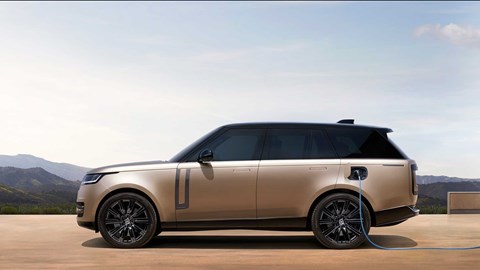
Every model sends drive to all four wheels through an eight-speed transmission, with a low-range transfer ‘box for proper ups and downs off-road. Naturally, there’s a slew of off-roading hardware, including more differentials than you could shake a walking stick at, dynamic air suspension, Terrain Response 2 for setting up the car for different surfaces and the promise of a 900mm wading depth. Interestingly, Land Rover admits that most RRs don’t do this kind of off-roading when new; their propensity to veer off tarmac increases dramatically as they age.
One other notable change to the chassis is the arrival of four-wheel steering, the rear axle pointing at up to 7deg to help with high-speed stability and parking manoeuvres (a sub-11m turning circle is claimed, making it the nippiest Land Rover product of all, with the manoeuvrability of a mid-sized hatchback).
The plug-in hybrids: a new, longer-range PHEV
There will be a choice of two plug-in hybrid Range Rovers from day one, both powered by a whopping 38kWh lithium-ion battery for a decently long range. To put that in perspective, it’s bigger than the main battery in the Honda E or Mazda MX-30! That’s how the PHEVs can offer a 62-mile (100km) electric range and Land Rover predicts that three quarters of customers’ journeys could be driven on silent electric power during daily duties.
Just think about that for a minute: how often do you drive more than 62 miles in a day? Unlike most contemporary plug-ins, the Range Rover P440e and P510e (named after their metric horsepower outputs) can be fast-charged at up to 50kW DC, meaning they can be topped up in less than an hour (or five on a 7kW wallbox at home). Sounds to us like the perfect stepping stone to the full Range Rover EV coming in 2024.
The design story
The new 2022 Range Rover is a simple, understated update of an iconic profile. Design chief Gerry McGovern didn’t demand revolution, but he did want the newcomer to significantly freshen up for the new decade ahead. ‘The Range Rover is very important, it’s our crown jewels,’ he told CAR. ‘We are really trying to push the clean, reductive approach. There’s a certain level of formality, but we have removed any over-ornamentation. It’s assured, uncluttered, very modern.’
The clamshell bonnet and floating roof remain, but the whole car feels crisper, less fussy than today’s Rangie. There is less trim on the side profile, for instance, as the glass rises straight out of the metalwork on the doors, without the need for a finisher. Similarly, there is no guttering where the roof meets the A-, B- or C-pillars, thanks to advances in laser-finishing and production processes at Block 1, the original Range Rover factory in Solihull.

Exterior designer Jez Waterman, who is credited with the original Evoque and Velar among others, led the exterior design team. ‘It has a milled-from-solid feel to it, yet we’ve tried to make it cleaner and more sophisticated.’ Notice the short front and rear overhangs (useful for off-roading), slightly lower roofline and the flush door handles, popping out on approach like on the Velar (let’s just hope they don’t go wrong). The power-operated split tailgate remains – now with an optional leather-stitched event seating option turning the boot into the poshest seats at the end-of-year school picnic.
One other big change on the new Rangie: it will be available as a seven-seater for the first time, as buyers can choose a standard or 20cm-stretched long-wheelbase (LWB) model with three rows of forward-facing seats. The market has moved that way, with most premium brands now offering seven seats (even Bentley’s Bentayga does now), forcing Land Rover to respond. The PHEVs are not available with three rows, owing to packaging difficulties with the underfloor batteries and target weight limits.
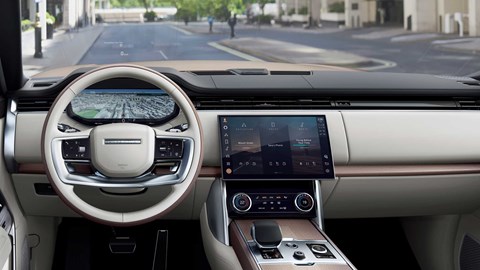
When can I buy the new L461 Range Rover?
UK sales are slated to begin in May 2022 and UK prices have been confirmed to start at £94,400, quite a hike from the outgoing model which starts at £83,525 in its dotage.
Is it worth the premium? We’ve already sat inside the new car and can vouch for the fact that it feels like a £100k luxury limo now. The choice of materials inside is first rate and the uncluttered design extends throughout the cabin, which feels calm and upmarket – especially the new porcelain door inserts. If you start plundering the SV brochure, you’ll quickly send that price spiralling with the likes of pop-out aircraft-style tables and rear fridges. It may be no coincidence that makes it sound more like a private jet than an upmarket luxury car…
Other interior innovations include the addition of Amazon Alexa voice control, Spotify integrated into the ents system and a new, more robust Pivi Pro infotainment screen promised to be more reliable, stable and faster-acting than earlier Land Rover touchscreens. If they can ace the electronics – never a strong point of the brand in recent years – it looks like they could have a hit on their hands.
What do you think of the new Range Rover? Be sure to sound off in the comments below.